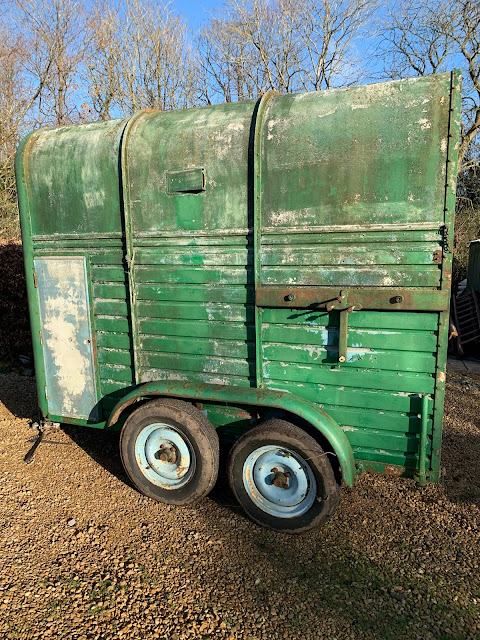And that is splitting snowdrops.
Snowdrops, unlike me, are completely undeterred by bad weather, and are in full flower both in my garden and all around the village. They don't seem to mind about situation, climate, or anything else, and will happily grow under trees where summer subjects would languish and fade away. This is because, obviously, they do pretty well all their growing before the tree canopy has appeared and blocked out the sunlight. And unlike most bulbs, they are best increased "in the green" as it is called, rather than by planting as dry bulbs in the autumn, when we would generally think about planting for a spring display.
 So if you have a few clumps and would like to increase your display to a vast carpet, like the one at Colesbourne Park in Gloucestershire, all you have to do is wait until the flowers start to fade, then dig up the clump, break it into groups of say, half a dozen or so bulbs, and replant in little groups all over your designated area. In a couple of years you will have twenty ot thirty clumps where you had just one. And remember that there are different varieties besides the wild Galanthus Nivalis native one, lovely though that is. In my own garden I have a number of different sorts, some early and some late, Galanthus Elwesii, the so called giant snowdrop, and a double flowered one, Flore Plena which I think is a bit weird. I always intend to identify all of the different varieties that I have but never get round to it, - in fact there are loads of different varieties, and there is even a special name for afficionados of snowdrops,- Galanthophiles - people who collect and appreciate the many different varieties of this lovely harbinger of spring and who are said to gather together in smoke filled rooms to exchange seed of rare varieties in dark corners. Just the kind of thing to captivate people at dinner parties - I can see it at the next village Wine Evening, "Camilla, have you met Charles, he's a galanthophile you know...but don't worry he's having therapy."
So if you have a few clumps and would like to increase your display to a vast carpet, like the one at Colesbourne Park in Gloucestershire, all you have to do is wait until the flowers start to fade, then dig up the clump, break it into groups of say, half a dozen or so bulbs, and replant in little groups all over your designated area. In a couple of years you will have twenty ot thirty clumps where you had just one. And remember that there are different varieties besides the wild Galanthus Nivalis native one, lovely though that is. In my own garden I have a number of different sorts, some early and some late, Galanthus Elwesii, the so called giant snowdrop, and a double flowered one, Flore Plena which I think is a bit weird. I always intend to identify all of the different varieties that I have but never get round to it, - in fact there are loads of different varieties, and there is even a special name for afficionados of snowdrops,- Galanthophiles - people who collect and appreciate the many different varieties of this lovely harbinger of spring and who are said to gather together in smoke filled rooms to exchange seed of rare varieties in dark corners. Just the kind of thing to captivate people at dinner parties - I can see it at the next village Wine Evening, "Camilla, have you met Charles, he's a galanthophile you know...but don't worry he's having therapy."Colesbourne Park, the ancestral home of Henry Elwes, after whom the large form was named, is quite close to here and well worth a visit at this time of year.



